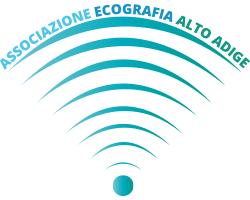Outcomes of Cardiovascular Magnetic Resonance Imaging in Patients Recently Recovered From Coronavirus Disease 2019 (COVID-19)
Valentina O. Puntmann, M. Ludovica Carerj, Imke Wieters, Masia Fahim, Christophe Arendt, Jedrzej Hoffmann, Anastasia Shchendrygina, Felicitas Escher, Mariuca Vasa-Nicotera, Andreas M. Zeiher, Maria Vehreschild,
Eike Nagel
Abstract
Importance: Coronavirus disease 2019 (COVID-19) continues to cause considerable morbidity and mortality worldwide. Case reports of hospitalized patients suggest that COVID-19 prominently affects the cardiovascular system, but the overall impact remains unknown.
Objective: To evaluate the presence of myocardial injury in unselected patients recently recovered from COVID-19 illness.
Design, Setting, and Participants: In this prospective observational cohort study, 100 patients recently recovered from COVID-19 illness were identified from the University Hospital Frankfurt COVID-19 Registry between April and June 2020.
Exposure: Recent recovery from severe acute respiratory syndrome coronavirus 2 infection, as determined by reverse transcription–polymerase chain reaction on swab test of the upper respiratory tract.
Main Outcomes and Measures: Demographic characteristics, cardiac blood markers, and cardiovascular magnetic resonance (CMR) imaging were obtained. Comparisons were made with age-matched and sex-matched control groups of healthy volunteers (n = 50) and risk factor–matched patients (n = 57).
Results: Of the 100 included patients, 53 (53%) were male, and the median (interquartile range [IQR]) age was 49 (45-53) years. The median (IQR) time interval between COVID-19 diagnosis and CMR was 71 (64-92) days. Of the 100 patients recently recovered from COVID-19, 67 (67%) recovered at home, while 33 (33%) required hospitalization. At the time of CMR, high-sensitivity troponin T (hsTnT) was detectable (3 pg/mL or greater) in 71 patients recently recovered from COVID-19 (71%) and significantly elevated (13.9 pg/mL or greater) in 5 patients (5%). Compared with healthy controls and risk factor–matched controls, patients recently recovered from COVID-19 had lower left ventricular ejection fraction, higher left ventricle volumes, higher left ventricle mass, and raised native T1 and T2. A total of 78 patients recently recovered from COVID-19 (78%) had abnormal CMR findings, including raised myocardial native T1 (n = 73), raised myocardial native T2 (n = 60), myocardial late gadolinium enhancement (n = 32), and pericardial enhancement (n = 22). There was a small but significant difference between patients who recovered at home vs in the hospital for native T1 mapping (median [IQR], 1122 [1113-1132] ms vs 1143 [1131-1156] ms; P = .02) but not for native T2 mapping or hsTnT levels. None of these measures were correlated with time from COVID-19 diagnosis (native T1: r = 0.07; P = .47; native T2: r = 0.14; P = .15; hsTnT: r = −0.07; P = .50). High-sensitivity troponin T was significantly correlated with native T1 mapping (r = 0.35; P < .001) and native T2 mapping (r = 0.22; P = .03). Endomyocardial biopsy in patients with severe findings revealed active lymphocytic inflammation. Native T1 and T2 were the measures with the best discriminatory ability to detect COVID-19–related myocardial pathology.
Conclusions and Relevance: In this study of a cohort of German patients recently recovered from COVID-19 infection, CMR revealed cardiac involvement in 78 patients (78%) and ongoing myocardial inflammation in 60 patients (60%), independent of preexisting conditions, severity and overall course of the acute illness, and time from the original diagnosis. These findings indicate the need for ongoing investigation of the long-term cardiovascular consequences of COVID-19.
Fonte:
JAMA Cardiology – Published online July 27, 2020
DOI:10.1001/jamacardio.2020.3557
© 2020 Puntmann VO et al. JAMA Cardiology.
